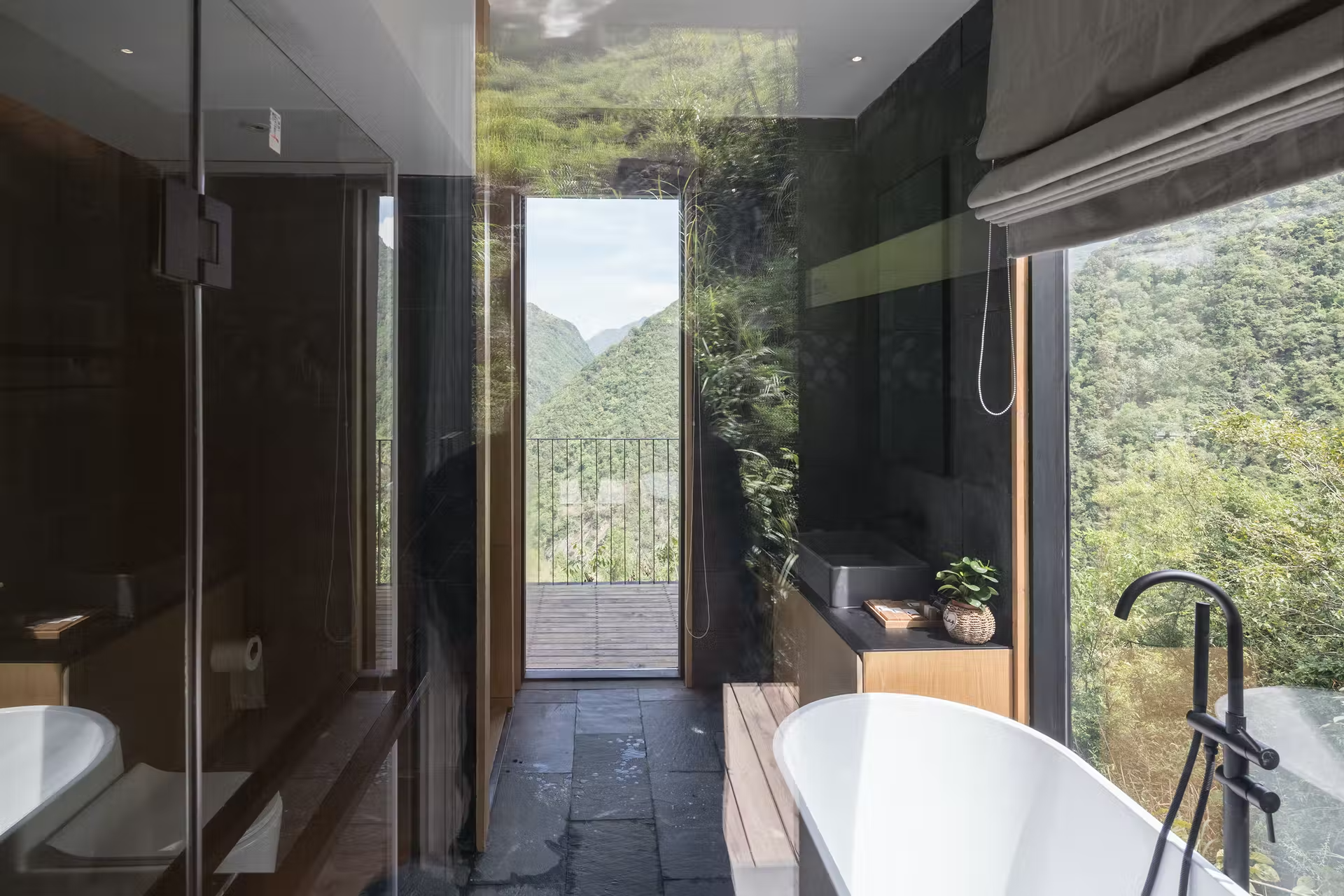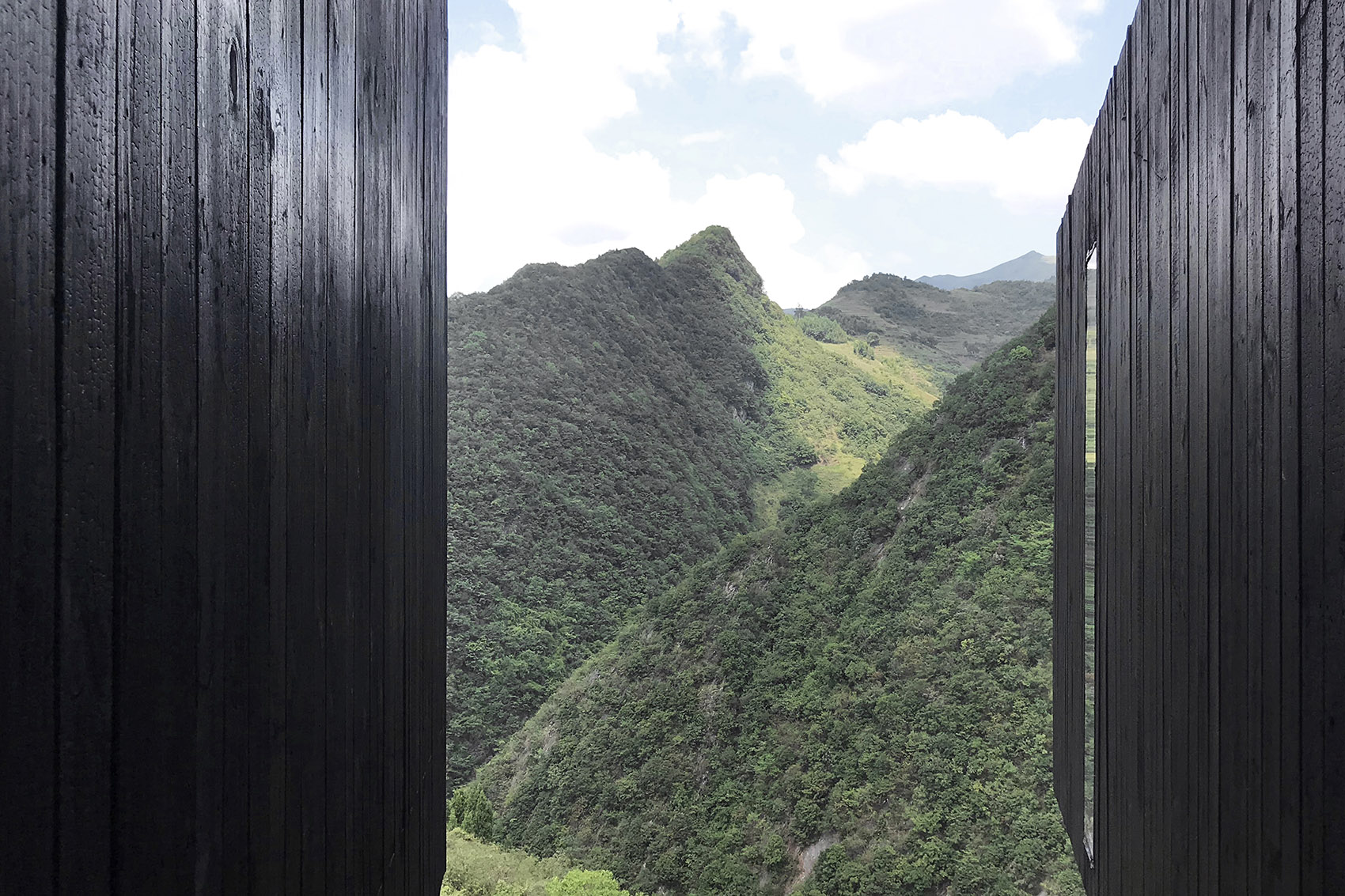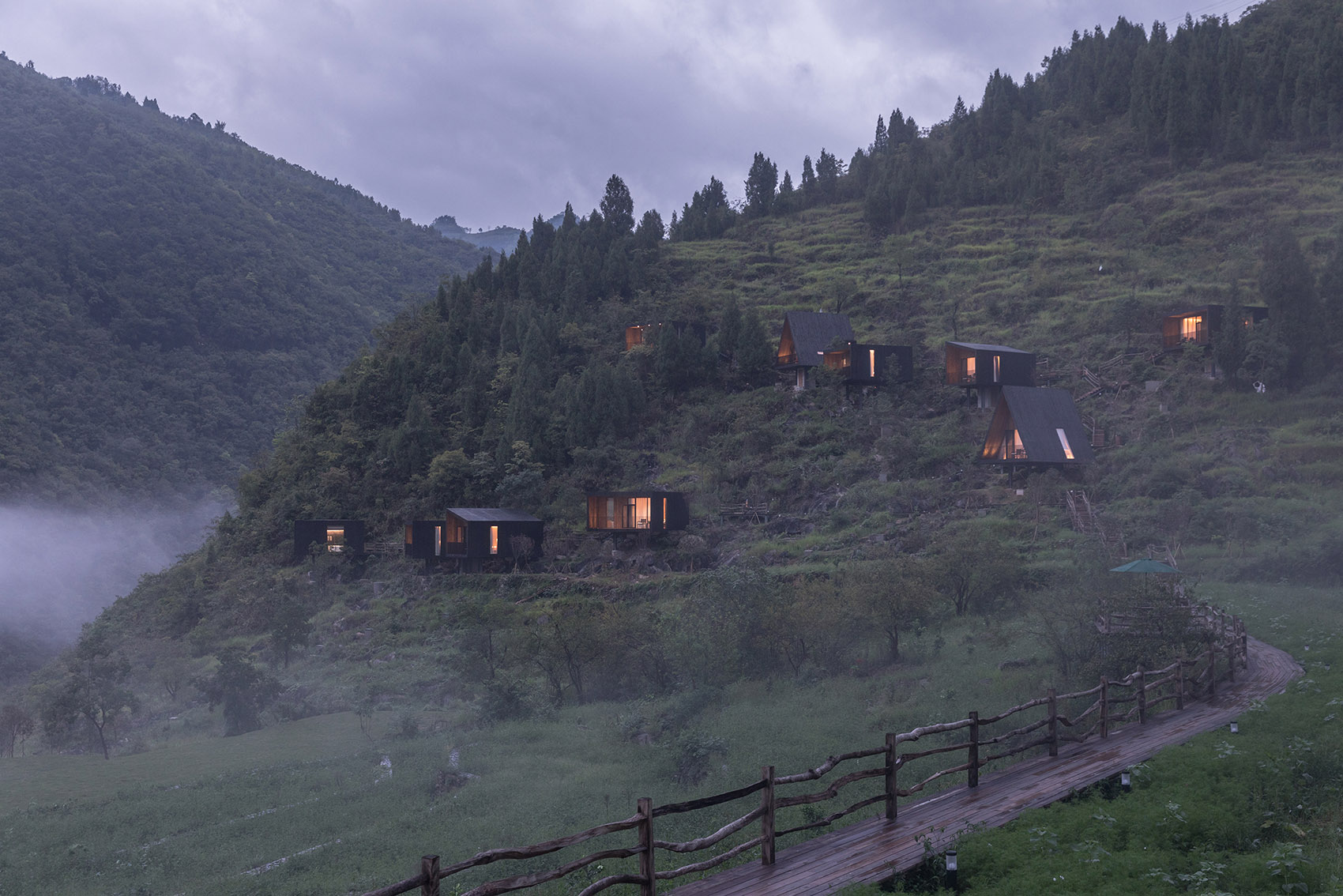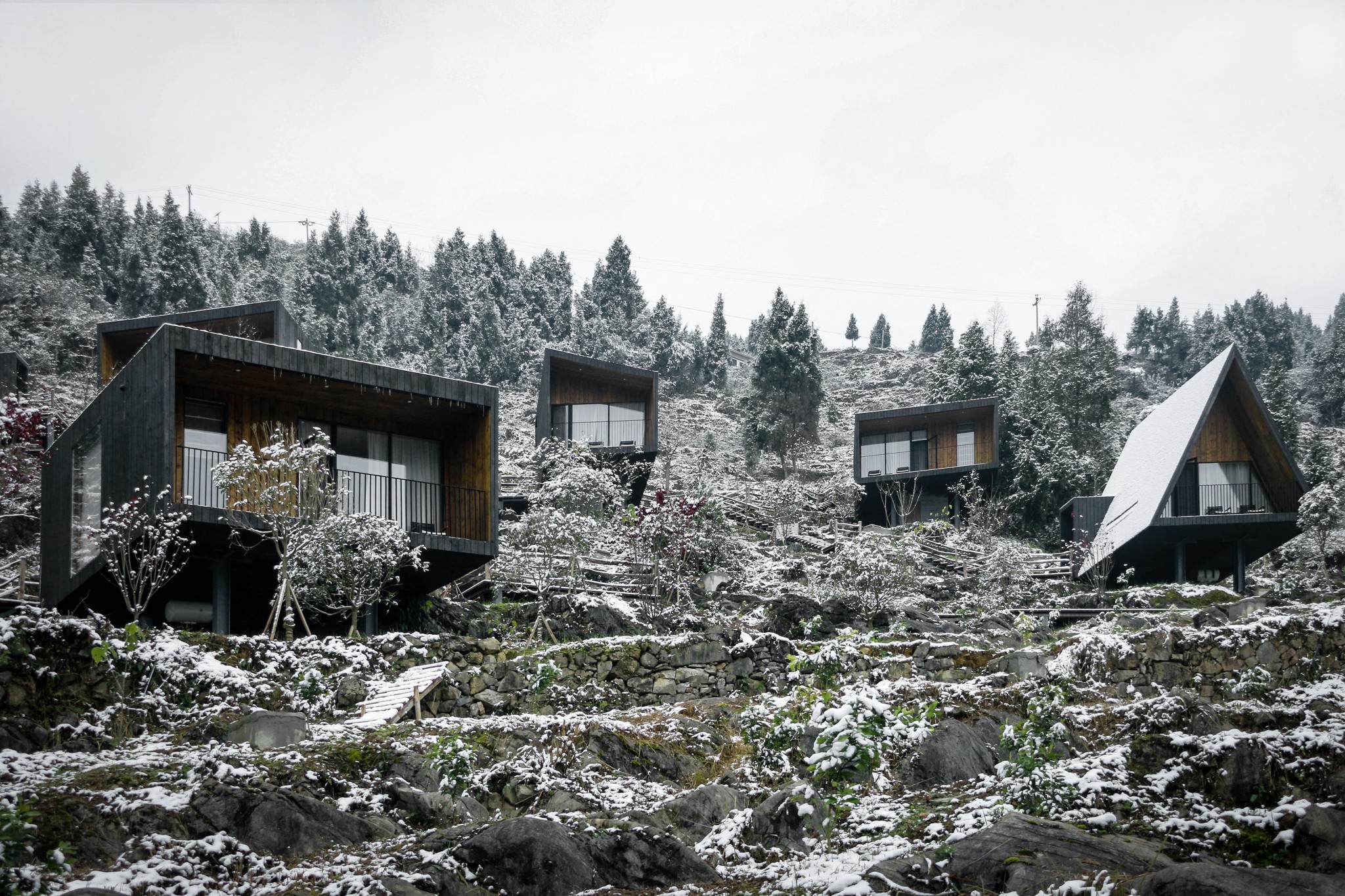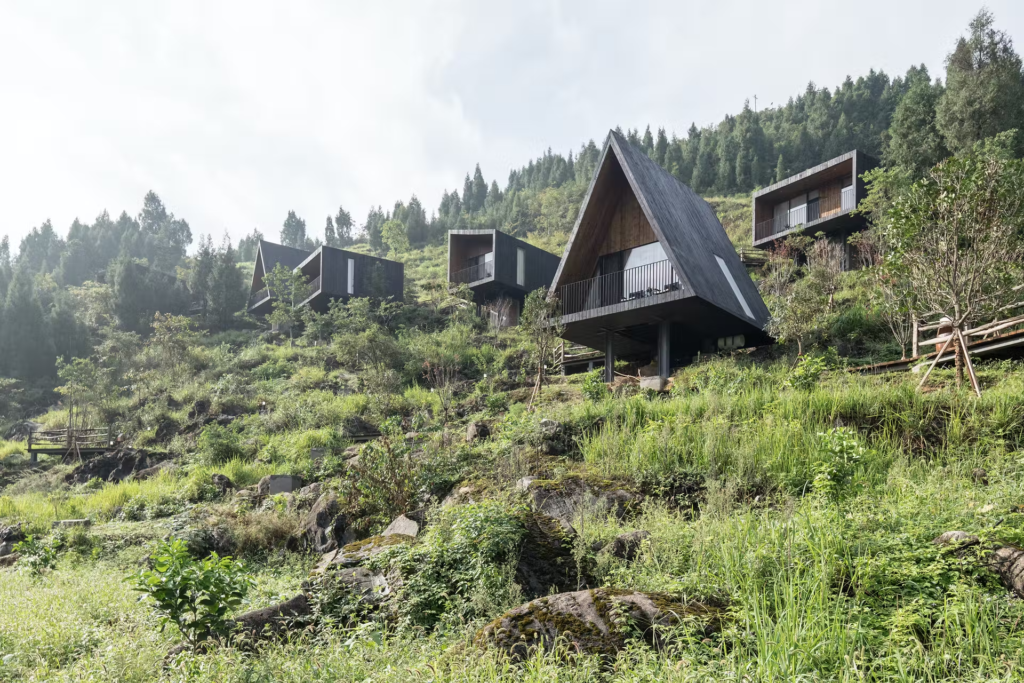
Woodhouse Hotel / ZJJZ
Located in the remote village of Tuanjie, the Woodhouse Hotel is one of the first projects of a new government policy to help ameliorate rural poverty through the introduction of agricultural tourism. Unlike other rural areas, the village of Tuanjie has little traditional architecture to hold on to. Instead, the striking landscapes and pollution-free farmlands are the village’s greatest assets. Therefore, our design goal was set to capture the beauty of nature with tranquil forms that harmonize with the surrounding environment.
Architects: ZJJZ ARCHITECTURE PRACTICE
Location: Tuanjie, Guizhou, China
Photography: Laurian Ghinițoiu
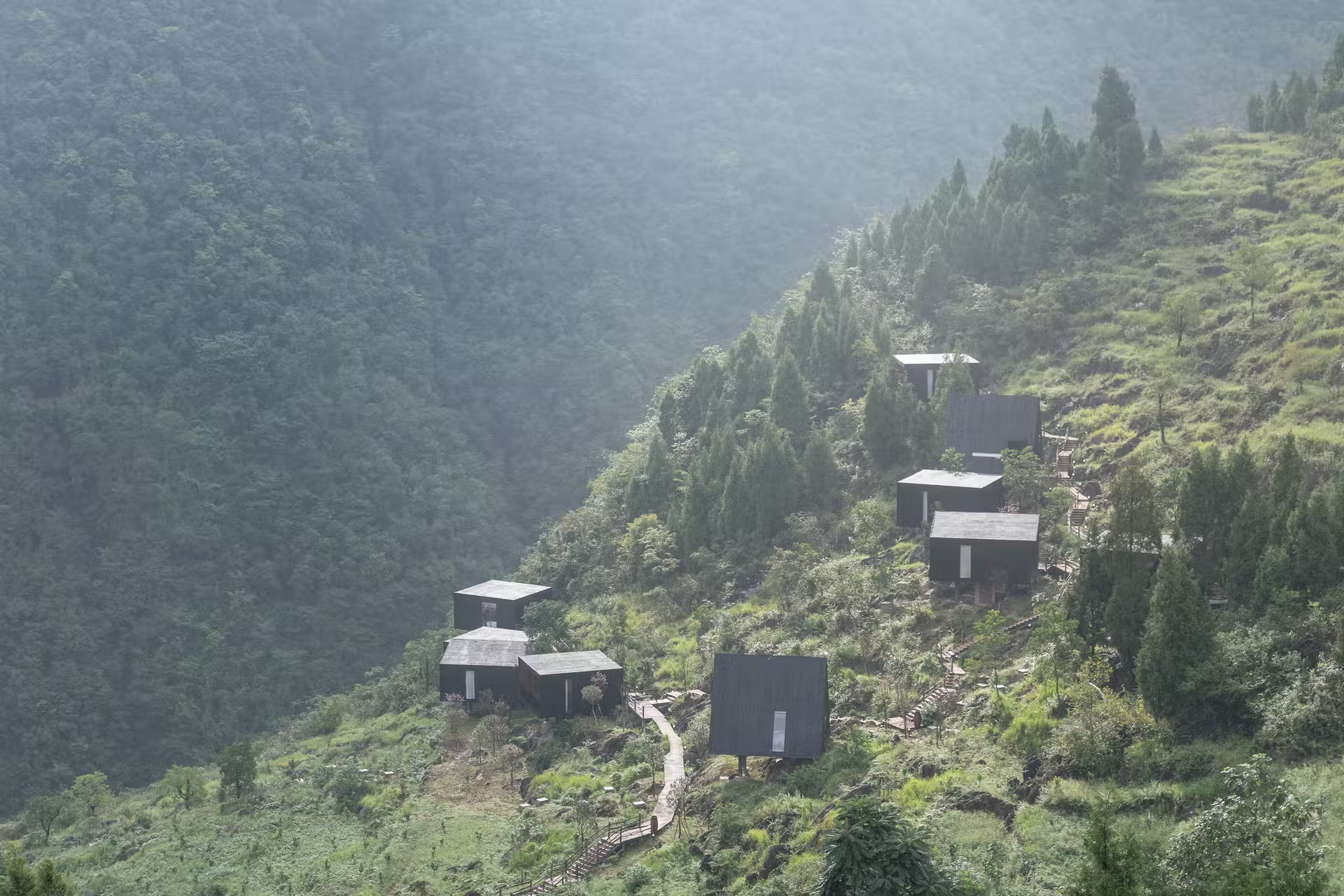
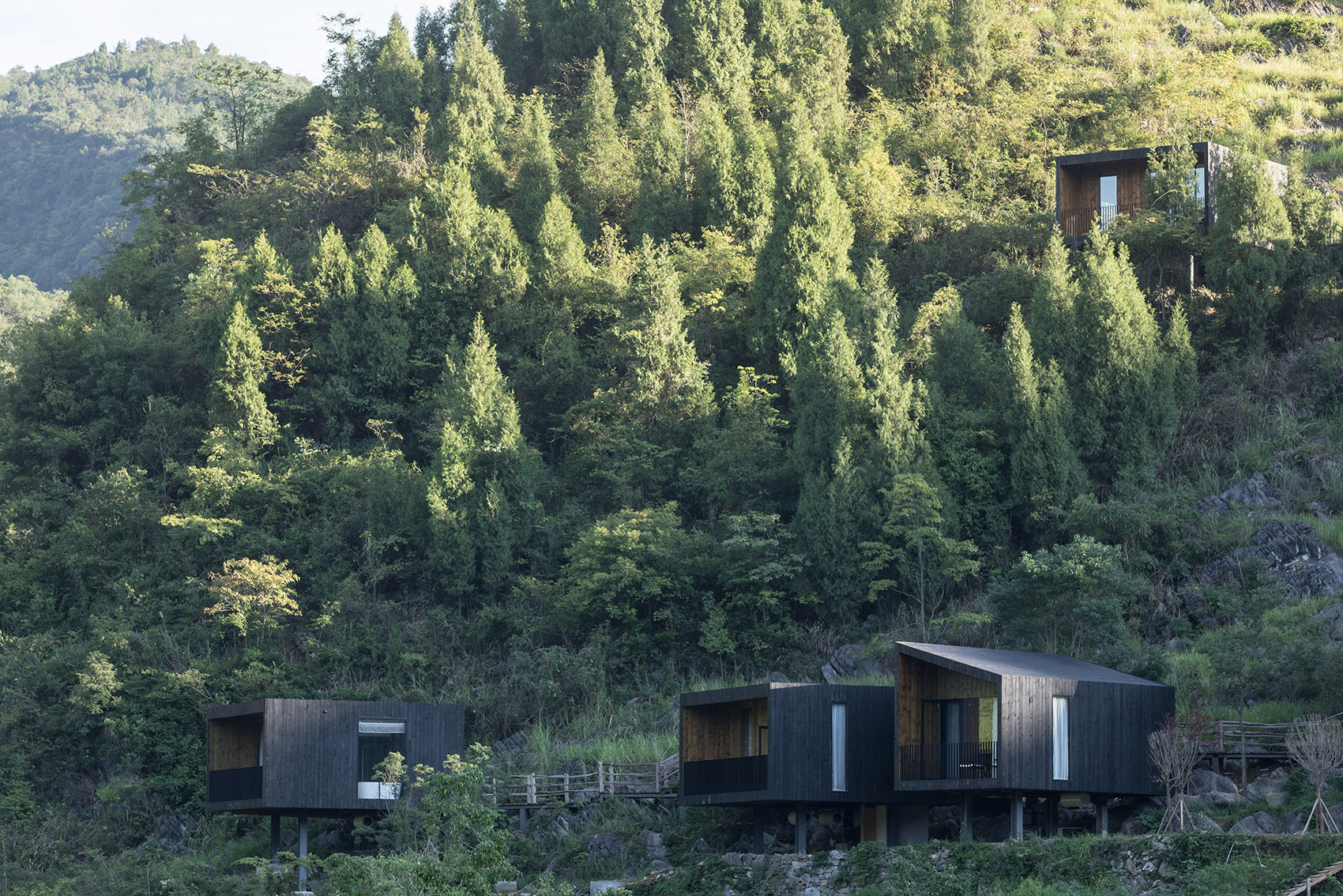
The hotel consists of 10 single-story wooden houses on a hillside that merges into abundant grass and woods. The topography of the site is complex and features scattered rock formations. Drawings no longer provide sufficient information in this case. Eventually, through thorough site surveys, the location and orientation of the ten wood houses were determined so as to capture the most appealing views without disrupting the original rock formations and forests. A reasonable pedestrian path leads from the bottom of the mountain to the ten individual houses.
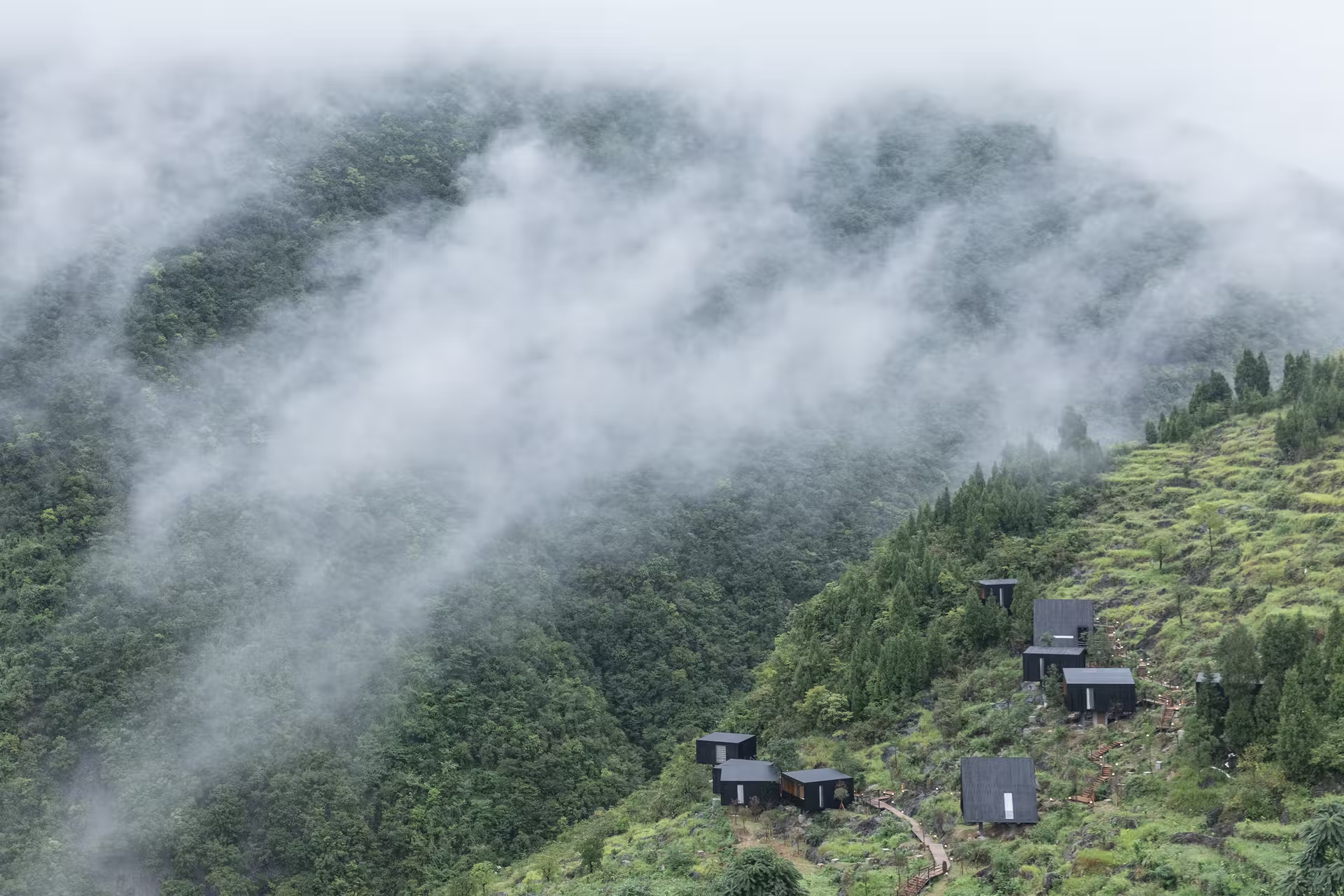

Because of the complex terrain, all building materials were manually transported up to the mountain. In order to improve construction efficiency and minimize damage to the original rock formations, a combined structural system was adopted for each house using a wood-structured object and an elevated steel platform. The carbonized wood of the facade was manufactured on-site with a simple process to reduce cost.

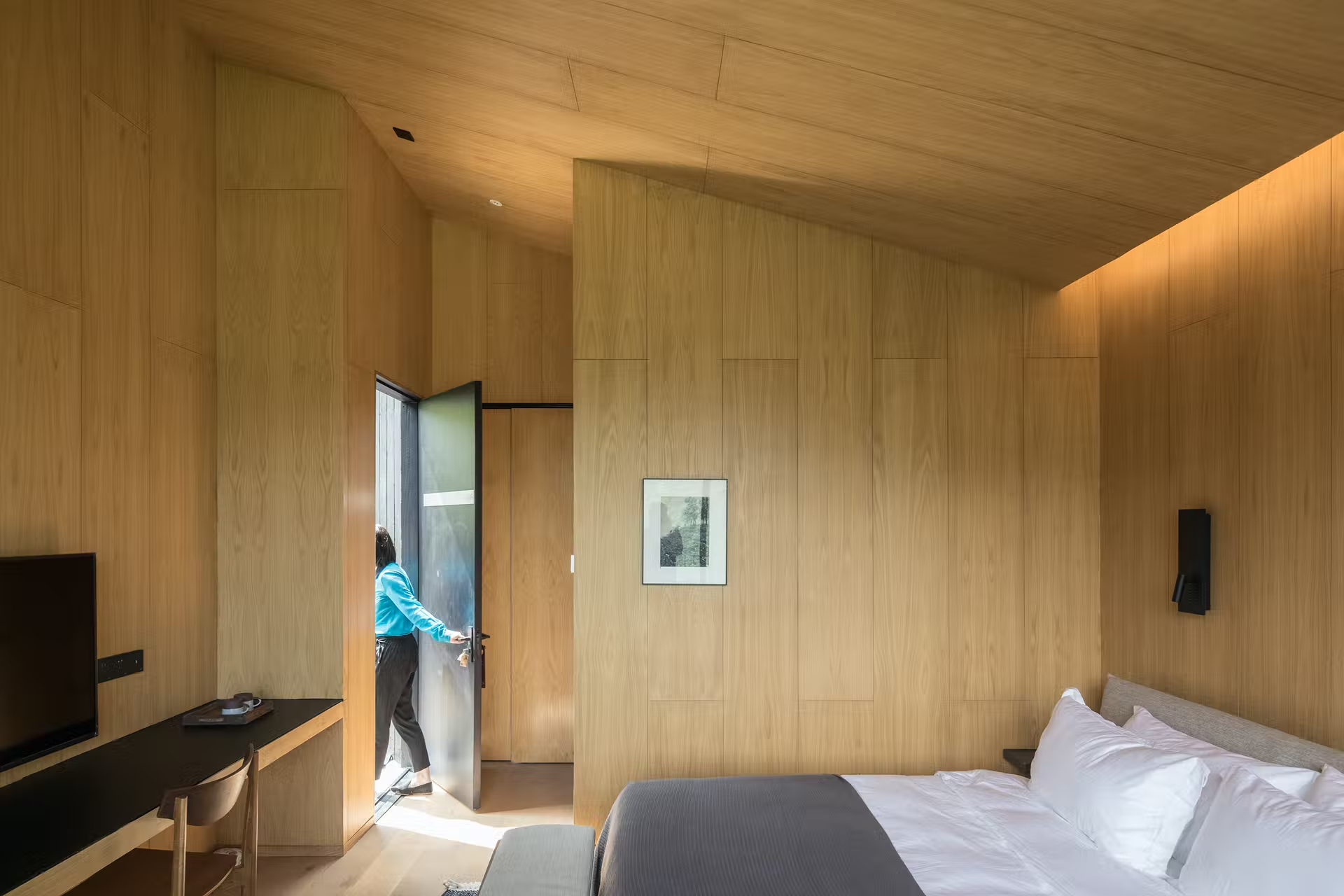
The design of the wood houses aims to harmonize with the landscape and the rustic atmosphere while forming a contrast to the existing village buildings. Therefore, we avoided complex or exaggerated designs and selected three basic geometric forms. Each house serves as a separate room. The volumes of the rooms are minimized to reduce the sense of presence in the environment while ensuring indoor comfort. The façade, made of carbonized wood, is weather-resistant, and its color and texture make the wood houses blend into the landscape smoothly. For interior space, various windows are cut out in each house according to their form and orientation, introducing rich layers of surrounding landscapes into the pure volumes.

